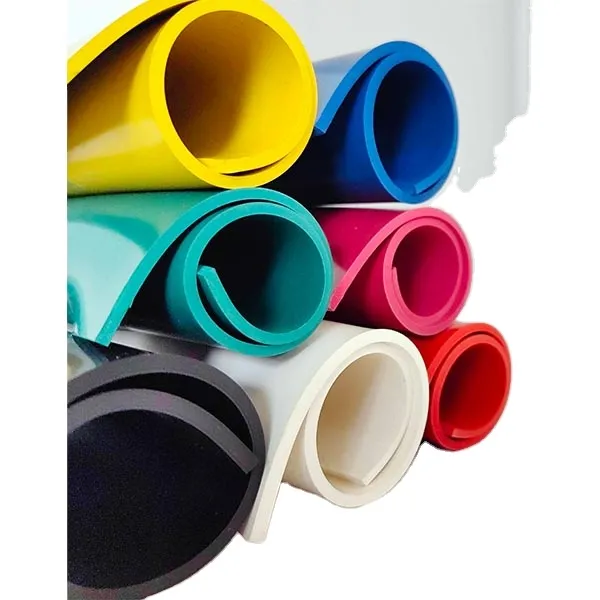Flexible Weather Stripping for Improved Energy Efficiency and Home Comfort Solutions
Flexible Weather Stripping A Comprehensive Guide
Weather stripping is a fundamental aspect of maintaining energy efficiency, comfort, and the overall integrity of your home. Among the various types of weather stripping available, flexible weather stripping stands out due to its adaptability and effectiveness. This article aims to explore what flexible weather stripping is, its benefits, materials used, installation methods, and maintenance tips.
What is Flexible Weather Stripping?
Flexible weather stripping refers to a type of sealing material designed to fill gaps around doors, windows, and other openings in buildings. Unlike rigid materials which may crack or break when exposed to changing temperatures, flexible weather stripping can expand and contract according to the weather conditions, ensuring a tight seal year-round. This adaptability makes it an ideal choice for regions with fluctuating temperatures.
Benefits of Flexible Weather Stripping
1. Energy Efficiency One of the primary benefits of installing flexible weather stripping is the significant reduction in energy costs. By sealing air leaks, it helps maintain your home’s temperature, reducing the need for heating and cooling systems to work overtime.
2. Improved Comfort Properly installed weather stripping minimizes drafts, ensuring a more consistent temperature throughout your home. This enhances comfort, especially during extreme weather conditions.
3. Noise Reduction Flexible weather stripping can also serve as a barrier against external noise. By sealing gaps, it can help create a quieter indoor environment, making it particularly valuable in noisy urban areas.
4. Humidity Control This type of weather stripping can prevent moisture ingress, which is a common problem in older homes. By effectively sealing gaps, it helps maintain a balanced indoor humidity level, reducing the risk of mold and mildew.
5. Versatile Applications Flexible weather stripping is suitable for a wide range of applications, including windows, doors, and even vents. It can be used in residential as well as commercial settings.
Materials Used in Flexible Weather Stripping
Flexible weather stripping is made from various materials, each with its pros and cons. Some of the most common materials include
- Rubber Durable and weather-resistant, rubber is a popular choice for flexible weather stripping. It can withstand extreme temperature changes and is effective at sealing gaps.
- Vulcanized Foam This material is lightweight and can compress easily, making it excellent for irregular gaps. It is often used in doors and windows.
- Silicone Known for its flexibility and longevity, silicone weather stripping can endure harsh weather conditions, making it a long-lasting option.
flexible weather stripping

- Thermoplastic Elastomer This material combines the best of rubber and plastic and is highly resistant to UV rays and humidity
.Installation Methods
Installing flexible weather stripping can be a straightforward DIY project. Here’s how you can do it
1. Identify Gaps Use a flashlight to check for drafts around doors and windows. Clear any dirt or old weather stripping from the area.
2. Cut to Size Measure the length of the gaps you need to seal and cut the weather stripping to the appropriate size.
3. Apply Adhesive (if necessary) Some types of weather stripping come with self-adhesive backing, while others may require additional adhesive.
4. Press Firmly Place the weather stripping in the desired position, ensuring it covers the entire gap. Press firmly to ensure it adheres well.
5. Test the Seal Close your door or window and check for any drafts. If necessary, adjust the placement of the weather stripping.
Maintenance Tips
To prolong the life of your flexible weather stripping, consider the following maintenance tips
- Regular Inspections Check your weather stripping at least once a year to ensure it’s in good condition, particularly before winter.
- Clean the Surfaces Keep the areas around the weather stripping clean from dirt and debris to maintain a good seal.
- Replace When Necessary If you notice cracks, tears, or loss of elasticity, it may be time to replace the weather stripping to maintain optimal efficiency.
Conclusion
Flexible weather stripping is an essential investment for your home, contributing to energy efficiency, comfort, and noise reduction. With various materials and straightforward installation methods, it’s a practical solution for anyone looking to enhance their living conditions while reducing energy costs. By implementing flexible weather stripping, homeowners can expect a more comfortable and sustainable environment.
-
Under Door Draught Stopper: Essential ProtectionNewsJul.31,2025
-
Garage Door Seal and Weatherstrips for ProtectionNewsJul.31,2025
-
Edge Banding Tape for Perfect EdgesNewsJul.31,2025
-
Table Corner Guards and Wall Corner ProtectorsNewsJul.31,2025
-
Stair Nose Edging Trim and Tile Stair SolutionsNewsJul.31,2025
-
Truck Bed Rubber Mats for Pickup BedsNewsJul.31,2025
-
Window Weather Stripping for Noise ReductionNewsJul.29,2025